|
|
CoelogyneFamily: Orchidaceae.
|
|
|
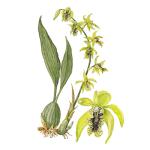 |
Genus of more than 100 species evergreen, epiphytic orchids occuring from lowland forest to high altitudes in mountainous regions from India and S.E.Asia to the Pacific Islands. They produce pseudobulbs with 2 narrow to broadly elliptic, leathery, pleated mid-green leaves. Flowers are borne in racemes, mainly from the center of new growth, usually from spring to summer.
The flowers are almost always white or creamy white.
Cultivate in baskets or shallow wide pots, in regular orchid potting mix.
|
|
| Growing conditions |
Watering and misting |
Propagation |
| For successful blooming of C. cristata and C. flaccida a cool conditions are necessary, especcialy in the winter (50-55 degrees).From spring to late autumn keep outside in fresh air, but avoid direct sunlight. Water alot in the summer; in the autumn, before blooming, reduce watering. After blooming, during the rest period, just spray it occasionally.
|
Water freely in the summer; in the autumn, before blooming, reduce watering. After blooming, during the rest period, keep completely dry, and just spray it occasionally. |
Divide when the plant fills the container and flows over the sides, or remove backbulbs after flowering and pot them up separately. |
|
Coelogyne confusa |
|
|
Another desireable member of the coelogyne family. Easy to grow in intermediate temperatures with moderate light. Produces arching flower spikes in creams to greens. |
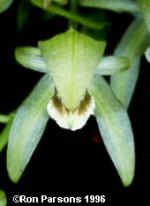 |
|
Coelogyne cristata Lindl. |
|
|
One of the most sought after coelogynes. Likes to grow mounted or in baskets so pendant growths can hang free. Comes from the Himalayas and is, therefore, a cool grower. Moderate to bright light.
Has egg shaped bulbs, clustered on a short inflorecence, carries 1-2 leaves. Has elegant white flowers, collected 5-9 on rather short drooping inflorecences, which grow from the base of the bulbs. Petals are oblong, and very wavy. Lip is also snowy white, with 5 yeallow spots. Blooms in January-March. |
 |
|
Coelogyne graminifolia |
|
|
Beautiful Burmese species growing on the intermediate side with moderate light. Likes lots of water in its growing period. Produces 5 - 6 flowers per inflorescence. |
 |
|
Coelogyne mamorata |
|
|
Still another desireable member of the coelogyne family. Easy to grow in intermediate temperatures with moderate light. Produces arching flower spikes in creams to greens. Smaller flower than C. confusa, but higher flower count. |
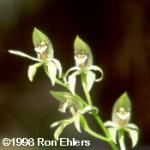 |
|
Coelogyne pandurata |
|
|
Large, green flowers with "black" lip on a long, arching spike. This was the original "black orchid", so named because of its lip. Easy to grow in intermediate temperatures with moderate light. |
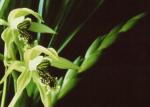 |
|
Coelogyne rochussenii |
|
|
|
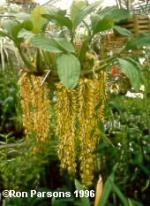 |
|
Coelogyne rochussenii |
|
|
|
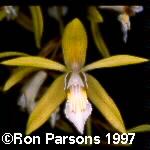 |
|
These materials are freely provided for instructional and educational purposes. Any duplication or publication of text or images herein for commercial gain without explicit written permission of the owner or photographer constitutes breach of trust and violation of copyright.
Copyright © Galka Okhapkina 1998-2025








